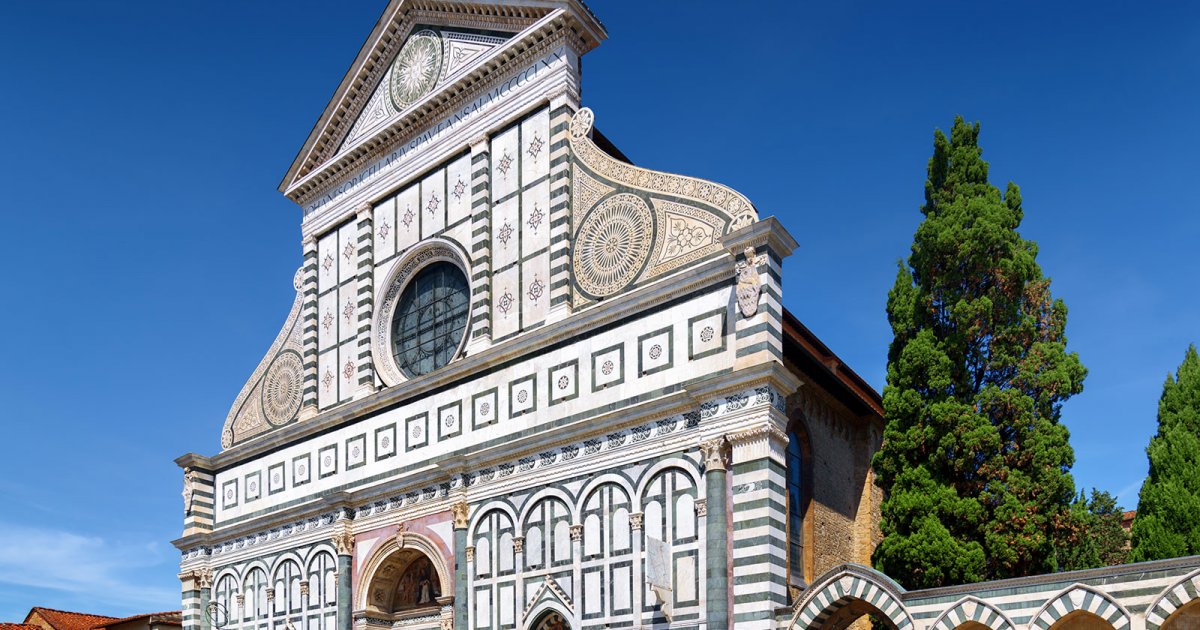SANTA MARIA NOVELLA, Exterior
 Language: English / USA
Language: English / USA
Work on the Church of Santa Maria Novella began in 1246, and it is one of the clearest examples of Italian Gothic style. At the same time in France or Germany, architects challenged each other to build taller and taller spectacular buildings, while in Italy the architects were seeking a better balance between proportions. You should know that Santa Maria Novella is the first Gothic church in Florence, and it is a model for all those that were made between the end of the 1200s and the beginning of the 1300s
According to tradition, it was designed by two Dominican brothers, Fra Sisto and Fra Ristoro, and the works lasted about a century. The grandiose building was partly funded by families who reserved private chapels or tombs in the noble cemetery on the right side: it was practically a form of medieval fund-raising!
Look at the beautiful façade, shining with white and green marble with a geometric decorative criterion that had already been used in the coating of the Baptistery and the Romanesque façade of San Miniato al Monte.
You'll notice that only the lower part with the slender, narrow arches that enclose sarcophagi dates back to the era of construction. After remaining unfinished for more than a century, the marble coating was resumed and reworked in the mid-1400s by the great architect Leon Battista Alberti, who is also famous for his essays on perspective.
Commissioned by Giovanni Rucellai (whose name appears in large letters in Latin up high on the central part: "Johannes Oricellari"), Alberti gave the existing decoration a highly elegant Renaissance feel.
Notice how Alberti, using the same materials as in the medieval part and incorporating the already existing circular window, created the main portal flanked by tall columns of green marble, with an ultra-calibrated geometric division with regular squares in the central and upper part. And you should also take note of a highly effective invention: the rounded wings with finely inlaid disks that hide the sloping of the side roofs. It is all completed by a triangular crowning, directly inspired by ancient architecture.
FUN FACT: if you look carefully at the decorations on the façade, you can see Giovanni Rucellai's two coats of arms: the feathers bunched in a ring and a full sail blown open by the wind. Today we would call these the sponsor's logos!



